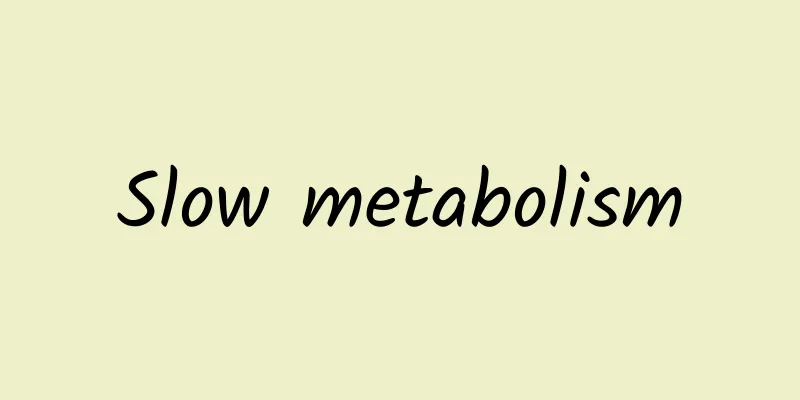Symptoms and nursing methods of cerebral ischemia

|
Ischemic brain disease is a common disease among the elderly. Its main symptoms include dizziness, headache, memory loss, insomnia and forgetfulness, which will have many adverse effects on the patient's normal life. In addition, if insufficient blood supply to the brain is not treated in time, it may even lead to more serious diseases such as cerebral infarction or Alzheimer's disease. Below, we will introduce the symptoms and care methods of cerebral ischemia in detail. 1. What is cerebral ischemia? Cerebral ischemia was first proposed by Japanese medical scientists in 1990. It refers to a disease in which various reasons lead to chronic and widespread blood supply deficiency in the brain, causing cerebral ischemia and hypoxia, resulting in a series of clinical manifestations of brain dysfunction. Cerebral ischemia is a common and frequently occurring disease among middle-aged and elderly people. Domestic and foreign medical scientists have also found through extensive research that in the early stages of Alzheimer's disease and cerebral infarction, there has been a long-term lack of blood supply to the brain. If the lack of blood supply to the brain is not treated in time, it may also cause Alzheimer's disease and cerebral infarction. Therefore, insufficient blood supply to the brain is also called the "invisible killer" that threatens the health of middle-aged and elderly people. 2. Early symptoms of insufficient blood supply to the heart and brain: 1. Recurrent symptoms of dizziness, heavy head, and headache, as well as irritability, tinnitus, irritability, insomnia, memory loss, lack of concentration, and forgetfulness (e.g., inability to remember recent events). 2. Have a history of hypertension or retinal arteriosclerosis. 3. Neurological examination was normal. 4. No cerebral hemorrhage was found in head CT or magnetic resonance imaging (MRI). 5. TCD shows changes of cerebral arteriosclerosis, occlusion or stenosis. 3. What to do if there is insufficient blood supply to the heart and brain? 1. Eat until 80% full. Changing eating habits and eating until you are 70% to 80% full can reduce the degree of periodic cardiovascular and cerebrovascular ischemia throughout the day. It is recommended to drink 500 ml of milk, eat 100 grams of pasta, 1 egg and 100 grams of beef or mutton, chicken, or fish in the morning; eat 300 grams of vegetables and 200 grams of staple food for lunch, and eat 150 grams of fruit after a nap; eat 200 grams of vegetables and 100 grams of soy products for dinner. These food amounts are roughly 70% to 80% of an adult's food intake. Such a dietary structure will effectively reduce a person's periodic cardiovascular and cerebrovascular ischemia. 2. Good sleep. Before going to bed, you can listen to some light music, take a cold shower, or drink a bag of cold yogurt, all of which will help you fall asleep as soon as possible. Naps are very important for fat people, and they should stick to the approach of "I will take a nap even if the sky falls." 3. Be calm. Think less and reduce anxiety to avoid excessive anger and induce heart and brain diseases. In summer, the heart fire is strong. Chinese medicine health experts recommend that obese people reduce their thoughts, especially those involving many interpersonal relationships, so as to avoid excessive heart fire and induce cardiovascular and cerebrovascular diseases. Fat people should take a bath at least twice a day, firstly to ensure skin health, and secondly to bring a good mood. 4. The exercise intensity is low. Moderate exercise is the best way to prevent and treat obesity. It can reduce fat accumulation and lower pathogenic blood lipids. |
<<: What are the symptoms of trypophobia? How is it treated?
>>: Eight ways to prevent prostate pain
Recommend
How to eradicate closed comedones
Closed comedones are caused by a too thick stratu...
What to do if the skin itches and pimples appear when scratched
If the skin is itchy and bumps appear immediately...
What are the benefits of Korean steam rooms?
As Korean steaming becomes more common in life, p...
How many days does candidal vaginitis take to heal?
Candidal vaginitis is a relatively common form of...
The effect of Siweino oral solution
Children have low resistance and weak gastrointes...
Can people with kidney yin deficiency eat American ginseng?
Kidney deficiency is a common problem among men, ...
Western medicine for removing dampness
The term "dampness" is a unique term in...
Small blisters on the breast
The growth of small blisters on the breast is a v...
How to treat allergic rhinitis, self-healing treatment for nasal sensitivity
We often sneeze when the seasons change or when t...
The efficacy and function of liver-nourishing grass
The main effect of nourishing liver grass is to r...
Why are my lips dry, itchy, and tight?
Dry, itchy and tight lips are usually caused by c...
Is sweat steaming good for weight loss?
Steaming is a popular way of health care. It has ...
What are the effects of drinking Panax notoginseng wine?
Panax notoginseng is a kind of Chinese herbal med...
Why does the baby have yellow mucus in his nose when he has a cold?
It is normal for babies to have yellow nasal disc...
Is there any harm in abdominal pain caused by IVF?
In vitro fertilization is a method of treating in...









